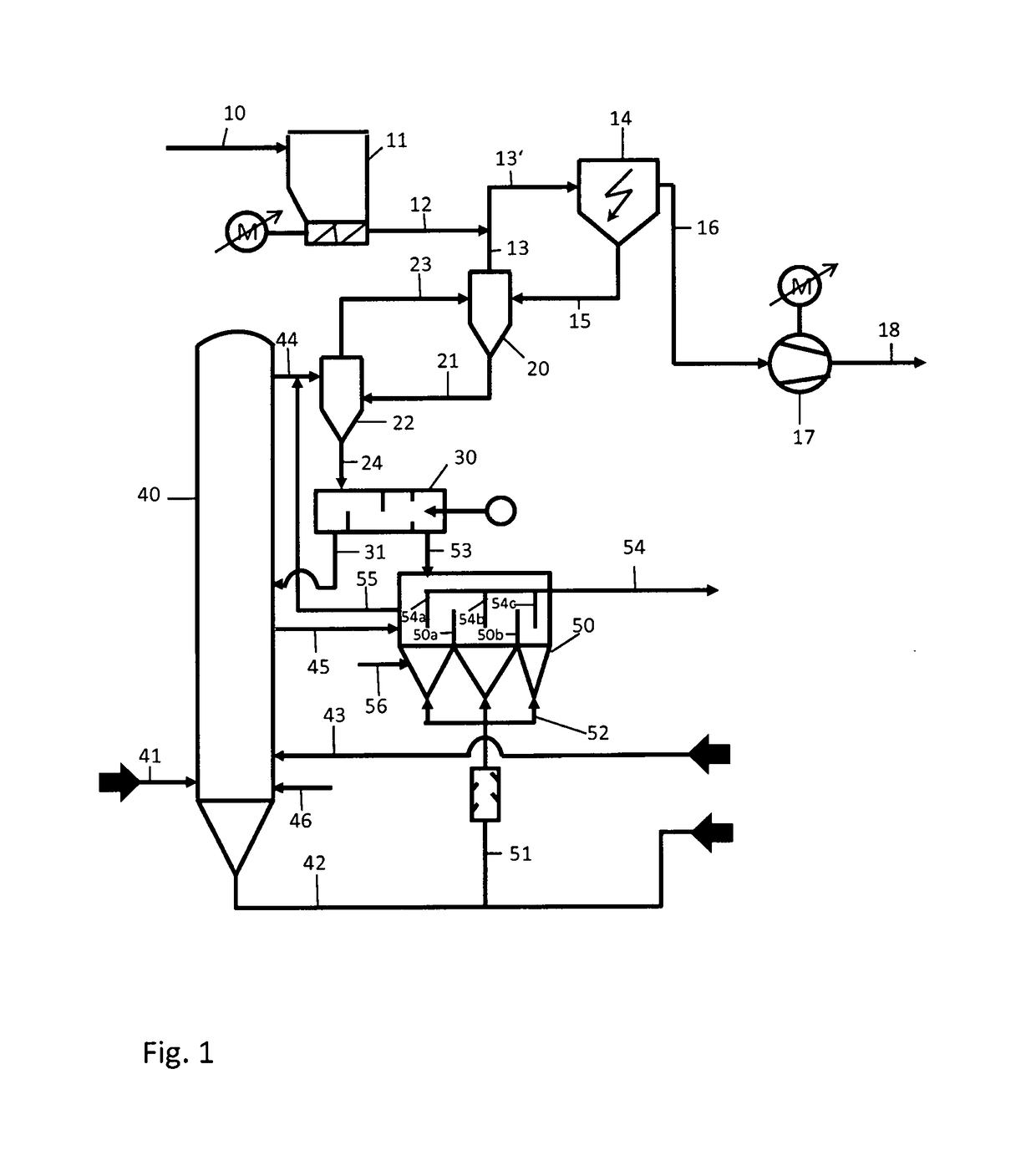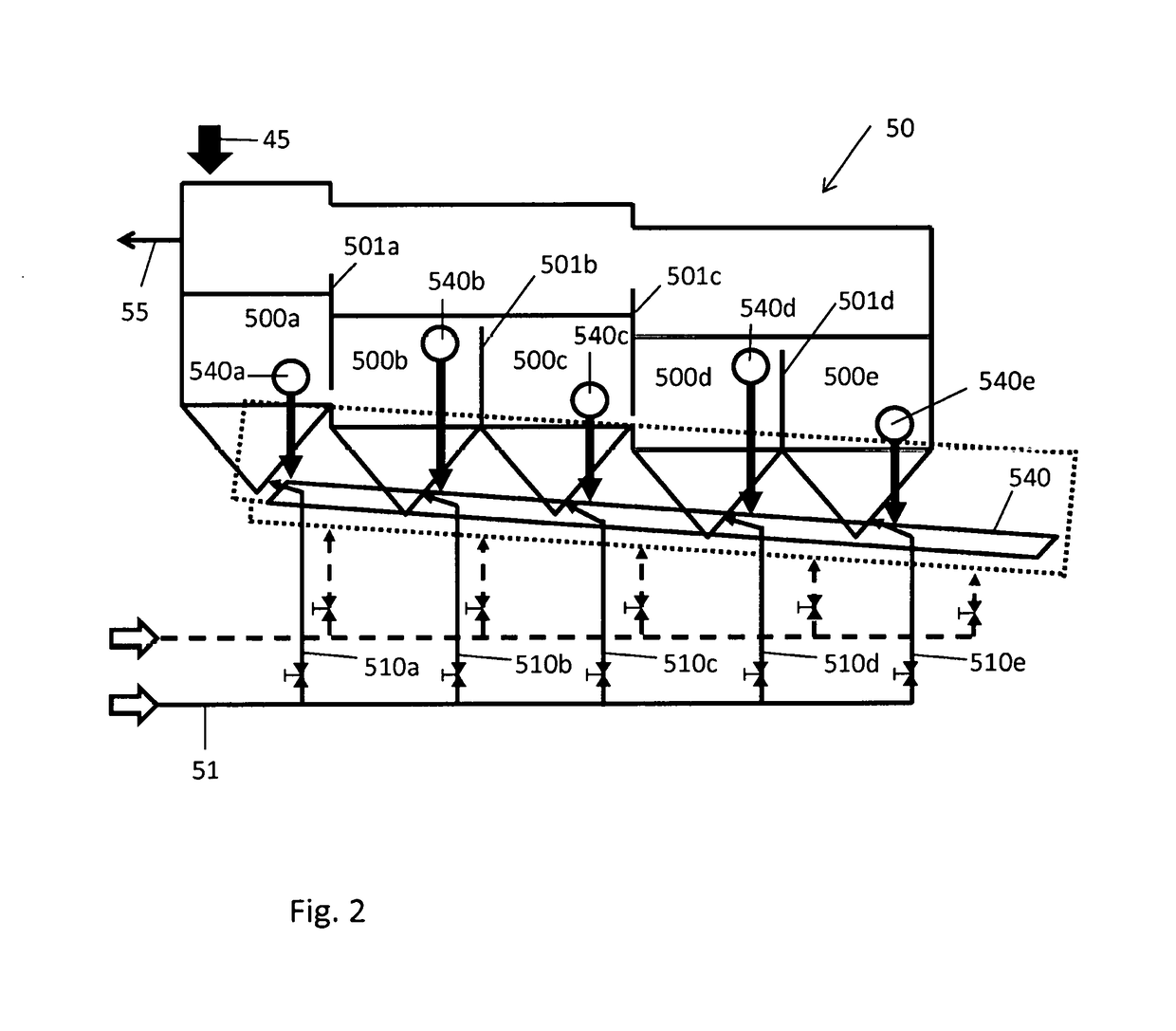Method and device for the heat treatment of granular solids
a heat treatment and granular solid technology, applied in the direction of calcination, chemical/physical processes, chemistry apparatus and processes, etc., can solve the problems of inability to form homogeneous beds, insufficient heat treatment, and insufficient heat treatment, so as to achieve consistent product quality and constant residence time
- Summary
- Abstract
- Description
- Claims
- Application Information
AI Technical Summary
Benefits of technology
Problems solved by technology
Method used
Image
Examples
example
[0038]An example of an application is calcining of spodumene ores in order to convert a-spodumene into β-spodumene. The process requires a high temperature of more than 1050° C. and a sufficient residence time of more than 30 minutes in order to convert sufficient of α-phase into β-phase. The use of the fluidized bed is advantageous compared with the rotary kiln which is otherwise employed, because precise temperature control is required in order to avoid overheating the minerals and thus to prevent dead burning. The residence time reactor is thus connected downstream of the fluidized bed reactor and in this manner enables the limited residence time in the reactor to be extended to the desired residence time of 40 minutes, for example.
PUM
| Property | Measurement | Unit |
|---|---|---|
| temperatures | aaaaa | aaaaa |
| residence time | aaaaa | aaaaa |
| residence time | aaaaa | aaaaa |
Abstract
Description
Claims
Application Information
 Login to View More
Login to View More - R&D
- Intellectual Property
- Life Sciences
- Materials
- Tech Scout
- Unparalleled Data Quality
- Higher Quality Content
- 60% Fewer Hallucinations
Browse by: Latest US Patents, China's latest patents, Technical Efficacy Thesaurus, Application Domain, Technology Topic, Popular Technical Reports.
© 2025 PatSnap. All rights reserved.Legal|Privacy policy|Modern Slavery Act Transparency Statement|Sitemap|About US| Contact US: help@patsnap.com


